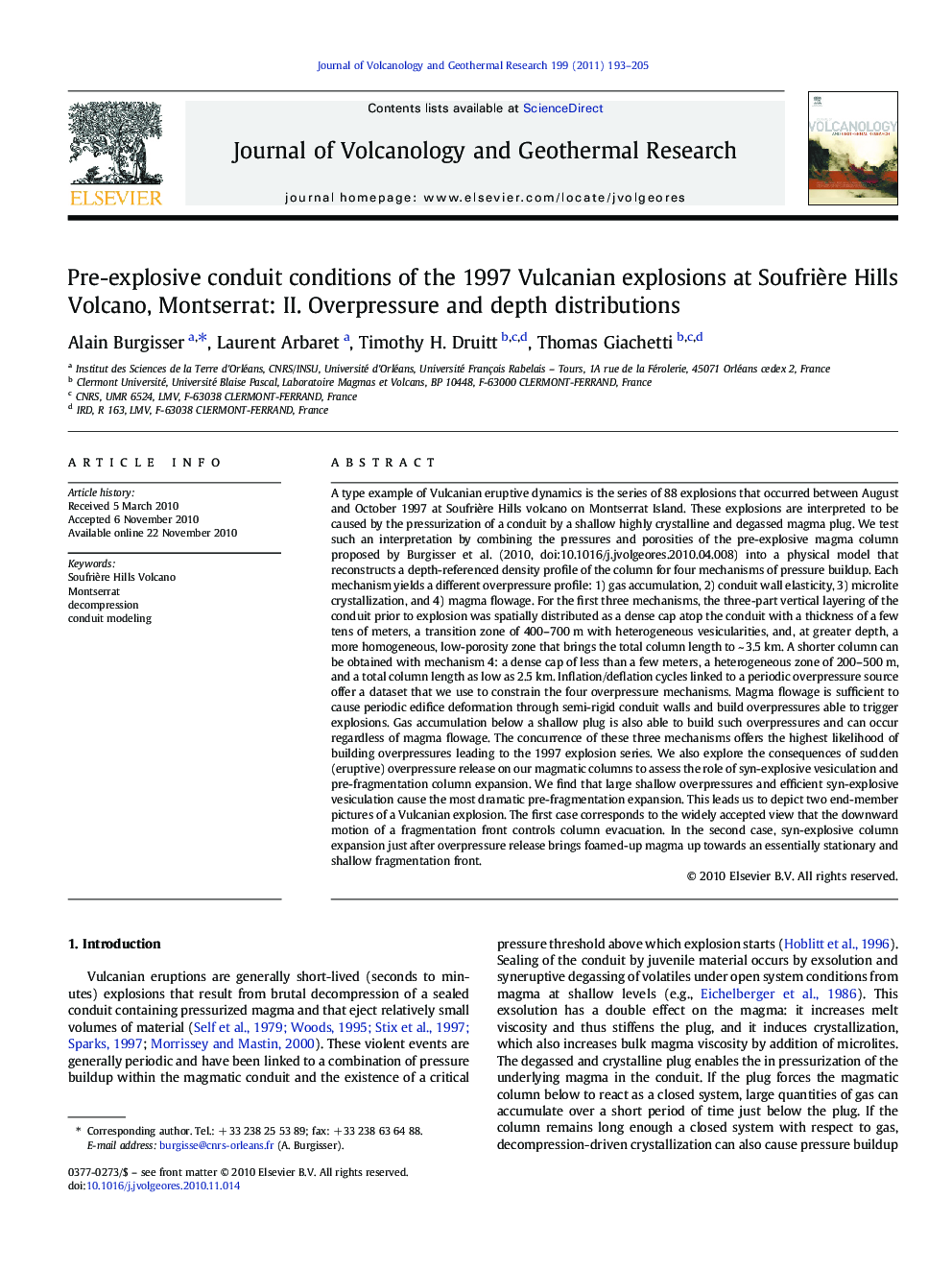| کد مقاله | کد نشریه | سال انتشار | مقاله انگلیسی | نسخه تمام متن |
|---|---|---|---|---|
| 4713676 | 1638409 | 2011 | 13 صفحه PDF | دانلود رایگان |

A type example of Vulcanian eruptive dynamics is the series of 88 explosions that occurred between August and October 1997 at Soufrière Hills volcano on Montserrat Island. These explosions are interpreted to be caused by the pressurization of a conduit by a shallow highly crystalline and degassed magma plug. We test such an interpretation by combining the pressures and porosities of the pre-explosive magma column proposed by Burgisser et al. (2010, doi:10.1016/j.jvolgeores.2010.04.008) into a physical model that reconstructs a depth-referenced density profile of the column for four mechanisms of pressure buildup. Each mechanism yields a different overpressure profile: 1) gas accumulation, 2) conduit wall elasticity, 3) microlite crystallization, and 4) magma flowage. For the first three mechanisms, the three-part vertical layering of the conduit prior to explosion was spatially distributed as a dense cap atop the conduit with a thickness of a few tens of meters, a transition zone of 400–700 m with heterogeneous vesicularities, and, at greater depth, a more homogeneous, low-porosity zone that brings the total column length to ~ 3.5 km. A shorter column can be obtained with mechanism 4: a dense cap of less than a few meters, a heterogeneous zone of 200–500 m, and a total column length as low as 2.5 km. Inflation/deflation cycles linked to a periodic overpressure source offer a dataset that we use to constrain the four overpressure mechanisms. Magma flowage is sufficient to cause periodic edifice deformation through semi-rigid conduit walls and build overpressures able to trigger explosions. Gas accumulation below a shallow plug is also able to build such overpressures and can occur regardless of magma flowage. The concurrence of these three mechanisms offers the highest likelihood of building overpressures leading to the 1997 explosion series. We also explore the consequences of sudden (eruptive) overpressure release on our magmatic columns to assess the role of syn-explosive vesiculation and pre-fragmentation column expansion. We find that large shallow overpressures and efficient syn-explosive vesiculation cause the most dramatic pre-fragmentation expansion. This leads us to depict two end-member pictures of a Vulcanian explosion. The first case corresponds to the widely accepted view that the downward motion of a fragmentation front controls column evacuation. In the second case, syn-explosive column expansion just after overpressure release brings foamed-up magma up towards an essentially stationary and shallow fragmentation front.
Graphical AbstractFigure optionsDownload as PowerPoint slideResearch Highlights
► Start with pre-explosive magma column (pressure vs. porosity).
► Transform into depth vs. porosity thanks to 4 mechanisms of pressure buildup.
► Concurrence of 3 mechanisms likely built overpressure leading to explosions.
► Explore consequences of overpressure release.
Journal: Journal of Volcanology and Geothermal Research - Volume 199, Issues 3–4, 15 January 2011, Pages 193–205